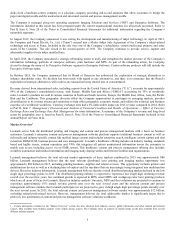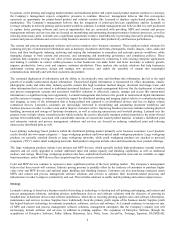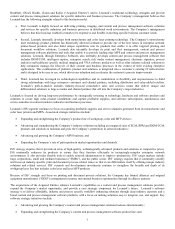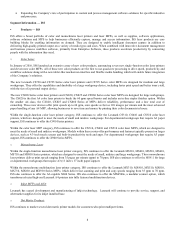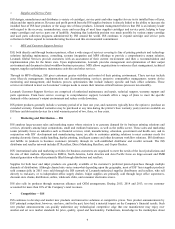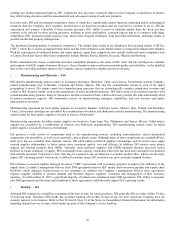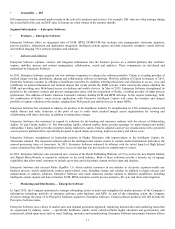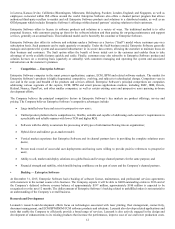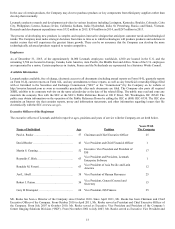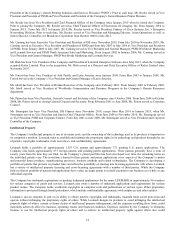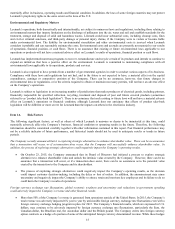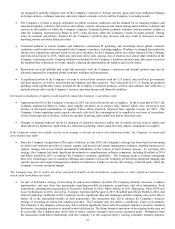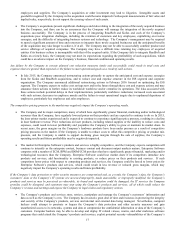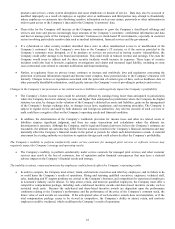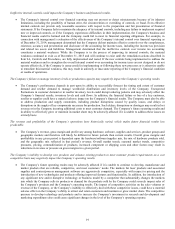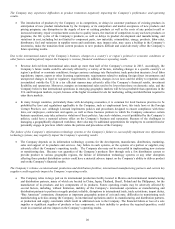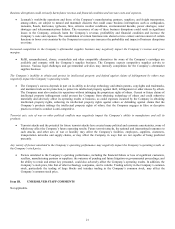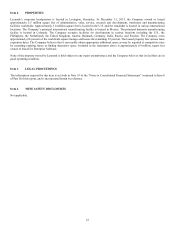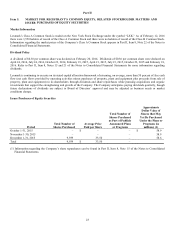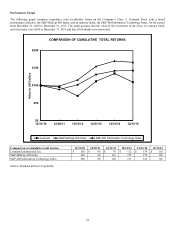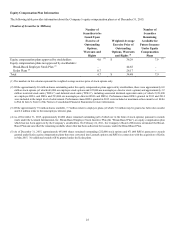Lexmark 2015 Annual Report Download - page 19
Download and view the complete annual report
Please find page 19 of the 2015 Lexmark annual report below. You can navigate through the pages in the report by either clicking on the pages listed below, or by using the keyword search tool below to find specific information within the annual report.15
materially affect its business, operating results and financial condition. In addition, the laws of some foreign countries may not protect
Lexmark’s proprietary rights to the same extent as the laws of the U.S.
Environmental and Regulatory Matters
Lexmark’s operations, both domestically and internationally, are subject to numerous laws and regulations, including those relating to
environmental matters that impose limitations on the discharge of pollutants into the air, water and soil and establish standards for the
treatment, storage and disposal of solid and hazardous wastes. Lexmark could incur substantial costs, including cleanup costs, fines
and civil or criminal sanctions, and third-party damage or personal injury claims, if the Company were to violate or become liable
under environmental laws. The liability for environmental remediation and other environmental costs is accrued when Lexmark
considers it probable and can reasonably estimate the costs. Environmental costs and accruals are presently not material to our results
of operations, financial position, or cash flows. There is no assurance that existing or future environmental laws applicable to our
operations or products will not have a material adverse effect on Lexmark’s results of operations, financial position or cash flows.
Lexmark has implemented numerous programs to recover, remanufacture and recycle certain of its products and intends to continue to
expand on initiatives that have a positive effect on the environment. Lexmark is committed to maintaining compliance with all
environmental laws applicable to its operations, products and services.
Lexmark is also required to have permits from a number of governmental agencies in order to conduct various aspects of its business.
Compliance with these laws and regulations has not had, and in the future is not expected to have, a material effect on the capital
expenditures, earnings or competitive position of the Company. There can be no assurance, however, that future changes in
environmental laws or regulations, or in the criteria required to obtain or maintain necessary permits, will not have an adverse effect
on the Company’s operations.
Lexmark is subject to legislation in an increasing number of jurisdictions that makes producers of electrical goods, including printers,
financially responsible for specified collection, recycling, treatment and disposal of past and future covered products (sometimes
referred to as “product take-back legislation”). There is no assurance that such existing or future laws will not have a material adverse
effect on Lexmark’s operations or financial condition, although Lexmark does not anticipate that effects of product take-back
legislation will be different or more severe for Lexmark than the impacts on others in the electronics industry.
Item 1A. Risk Factors
The following significant factors, as well as others of which Lexmark is unaware or deems to be immaterial at this time, could
materially adversely affect the Company’s business, financial condition or operating results in the future. Therefore, the following
information should be considered carefully together with other information contained in this report. Past financial performance may
not be a reliable indicator of future performance, and historical trends should not be used to anticipate results or trends in future
periods.
The Company recently announced that it is exploring strategic alternatives to enhance shareholder value. There can be no assurance
that a transaction will occur, or if a transaction does occur, that the Company will successfully enhance shareholder value. In
addition, the process of exploring strategic alternatives could negatively impact the Company’s operating results.
On October 23, 2015, the Company announced that its Board of Directors had initiated a process to explore strategic
alternatives to enhance shareholder value and unlock the intrinsic value created by the Company. However, there can be no
assurance that a transaction will occur, or if a transaction does occur, there can be no assurances as to the potential value
created by the transaction to the Company and its shareholders.
The process of exploring strategic alternatives could negatively impact the Company’s operating results, as the decision
could impact customer decision-making, including the delay or loss of orders. In addition, the announcement may cause
uncertainty and negatively impact the Company’s ability to attract, retain and motivate key employees and its failure to do so
could harm the Company’s results of operations.
Foreign currency exchange rate fluctuations, global economic weakness and uncertainty and reductions in government spending
could adversely impact the Company’s revenue and other financial results.
More than 50% of the Company’s revenue is generated from operations outside of the United States. In 2015, the Company’s
total revenue was adversely impacted 6% year to year by unfavorable foreign currency exchange rate fluctuations even with a
foreign currency exchange hedging program in place for 2015. The Company’s financial results, which are expressed in U.S.
dollars, may continue to be adversely impacted by foreign currency exchange rate fluctuations, particularly the Euro, the
Canadian dollar, the Brazilian real, the Australian dollar and the British pound. The Company enters into foreign currency
option contracts as a hedge of a portion of some of the anticipated foreign currency denominated revenue. While these hedges


